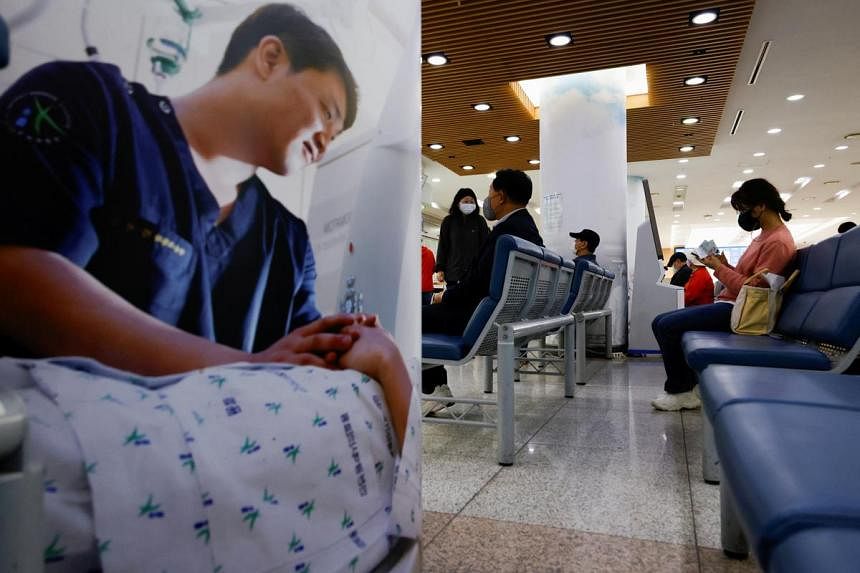INCHEON, South Korea - Hospitals in South Korea’s smaller cities are struggling with a lack of physicians as a nationwide strike of trainee doctors enters its third month in protest against plans to tackle the shortage by boosting medical school admissions.
Seoul, the capital, boasts top-level hospitals, but smaller cities are starved of doctors in a trend experts say will only get worse as the population ages at one of the world’s fastest rates, while birth rates are the lowest in the world.
“Our artificial kidney room was closed for almost two years because we didn’t have a doctor and we couldn’t find one... but this is a national phenomenon,” said Dr Cho Seung-yeon, director of the Incheon Medical Centre.
The shortage is at the heart of government plans to add thousands of medical school students from 2025, which face stiff opposition from trainee doctors and some medical groups who doubt it will improve poor working conditions.
South Korea has 2.6 doctors for every 1,000 people, one of the lowest rates among developed countries, according to the Organisation for Economic Cooperation and Development. In contrast, top-ranked Austria has 5.5 for every 1,000 people.
“I hope the number of doctors will increase due to our rapidly ageing society, which means more and more people will visit hospitals,” said Mr Yoo Byung-seon, 66, a patient at the Incheon hospital.
Because it cannot find staff, the hospital’s cardiology department has resorted to using roving doctors from a nearby university hospital, Dr Cho said.
In a complaint this week, the Korea Medical Association, a leading critic of the government’s reforms, accused Dr Cho and another staff member of breaking the law by using unlicensed personnel for some medical procedures.
Dr Cho denies those claims, a hospital spokesperson said.
Medical interns and resident doctors who began their strike late in February say they are underpaid and overworked, conditions the government must tackle before adding more physicians.
Dr Cho acknowledged that policies must change to ensure the new doctors work in under-served areas and do not just gravitate back to Seoul, but adding practitioners was a necessary first step.
The prolonged strike will only hurt physician assistants who often perform some of the doctors’ duties, though without the same protection, said Ms Choi Hee-sun, president of the Korean Health and Medical Workers’ Union.
“It’s only doctors who say there is no shortage of doctors,” she said, faulting both the government and the striking doctors for early failures to strike up dialogue, where a stalemate persists.
Medical outcomes can vary widely outside the capital, where government figures show there were 4.82 active doctors for every 1,000 people in 2022, compared with Incheon’s equivalent of 2.65.
The city chalked up South Korea’s highest rate of avoidable deaths, an indicator of healthcare quality, at 51.49 per 100,000 people in 2021, while the corresponding rate for Seoul was 38.56, Health Ministry figures show.
Madam Yoon Geum-ja, an 82-year-old who spent a month at a hospital in Incheon, said she was satisfied with the healthcare system now, but added: “I’m worried there won’t be many doctors around in future.” REUTERS

